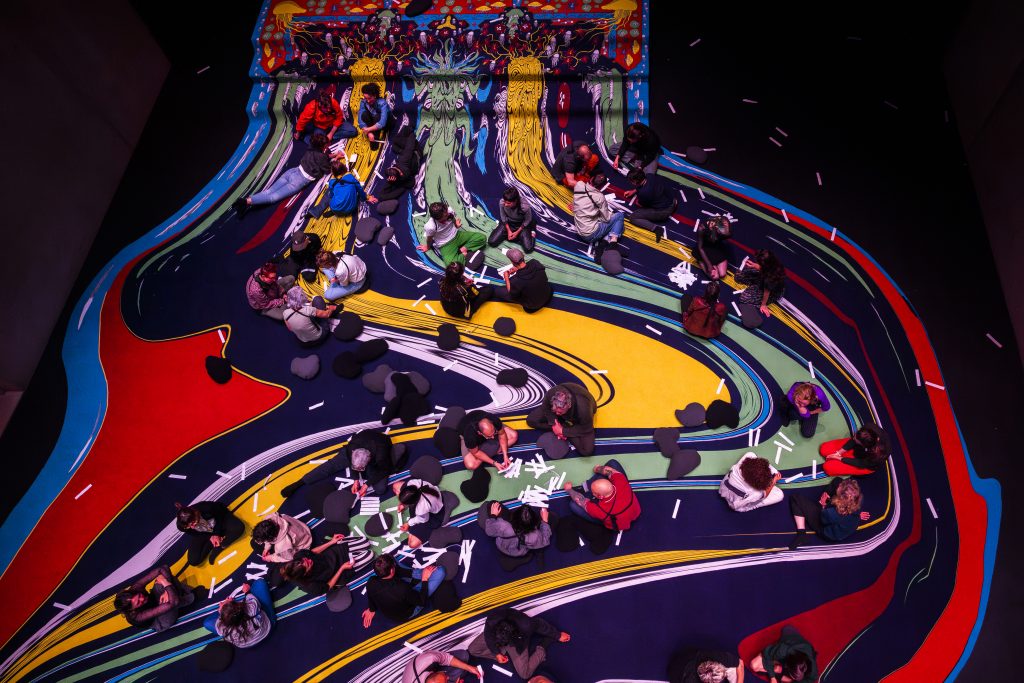
SPRING reporter: Lake Life
SPRING reporter Elisavet Droulou reports about Lake Life by Kate McIntosh.
Lake Life
When the audience enters the foyer, we meet the hostesses of this experience.
They tell us that our active participation will be necessary. Before we enter the
room we have to leave all our belongings behind, have a small speaker strapped
on our shoulder and take off our shoes -literally and figuratively: we won’t be
walking in our shoes for the next hour. Instead, we can even become someone
else: if we are just a little bit kind.
We enter a lake inhabited by beings different from us, with different customs,
priorities and lifestyles. First and foremost, we learn to greet in their own way.
They are called ‘Changelings’, which refers to their constant tendency to take
different forms. We are invited to introduce ourselves to others in the tactile way
of Changelings: with our eyes closed, we search for those of others with our
fingertips. We communicate tactually for a few seconds without seeing whose
fingertips we are touching.
Through the speaker we receive information about these creatures and
instructions about the next steps. Hostesses hold the Changelings in their hands:
small, elastic, translucent, jelly-like creatures. Their flexibility is not just physical,
but concerns their very existence. They have a tendency to constantly change
into something else.
This tendency is encouraged by the lake, which acts as an enabler for
transformation. The only thing that can disrupt the lake’s homeostasis is the
inability to change. This happens in case Changelings lose their imagination.
Those who cannot change are called “solids” or “sads” by the others.
After their metamorphosis to something else (e.g. a volcano), they return to the
lake, bringing with them their experiences from their previous state. They share
their wisdom and thus a collective pool of empirical knowledge is created. In the
change-friendly environment of the lake, the Changelings begin their next cycle
of transformation.
Scraps of paper with questions about our own transformation drop from the
ceiling: do you prefer to transform into a dangerous idea or a mountain top?
Away from our own shoes and into the fluidity of the lake we enter a world
where the only constant is that of change.
Dare we compare ourselves to these Changelings? The mere thought of such a
possibility inspires, intrigues, confronts or even scares us. This lake is the long
forgotten limitless imagination of our childhood.